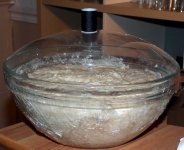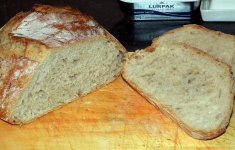Soldato
- Joined
- 1 Jul 2007
- Posts
- 5,392
I'm using strong bread flour.
Just waiting for a loaf to prove just now and again it's going out the way and up the way.
I'm struggling to think of a warm area to put it in. Only thing I can think of is maybe the oven on the lowest setting of 130 for a while with the dough in it.
Just waiting for a loaf to prove just now and again it's going out the way and up the way.
I'm struggling to think of a warm area to put it in. Only thing I can think of is maybe the oven on the lowest setting of 130 for a while with the dough in it.









